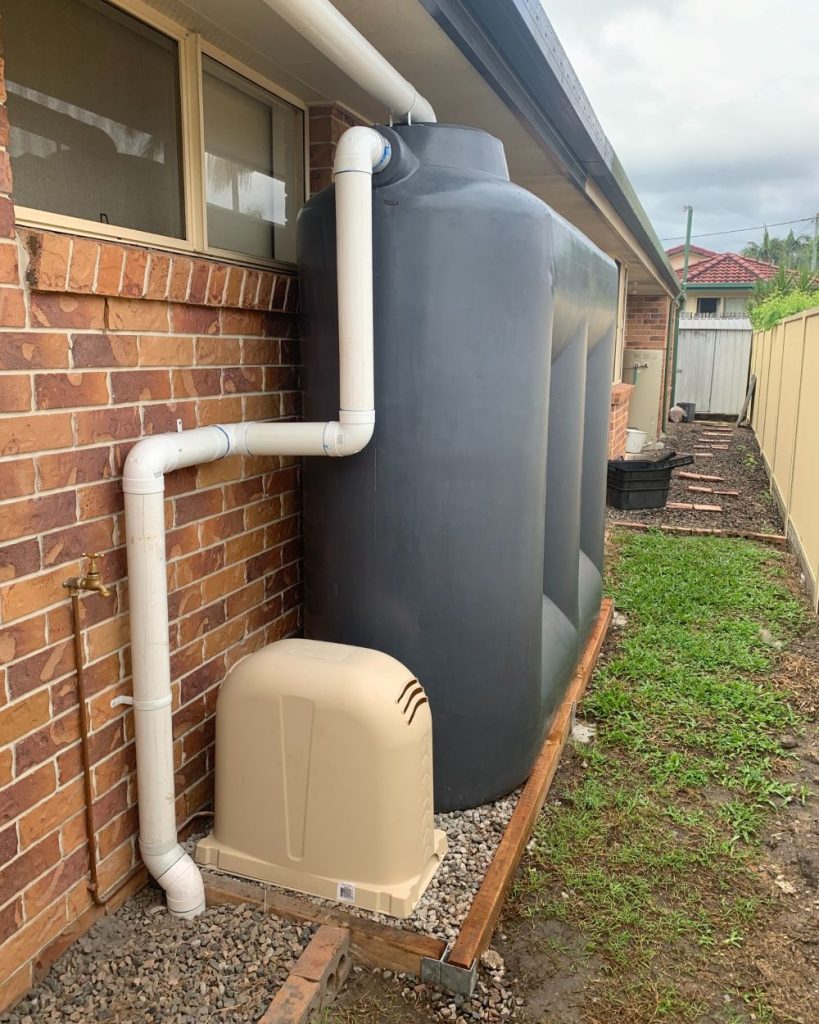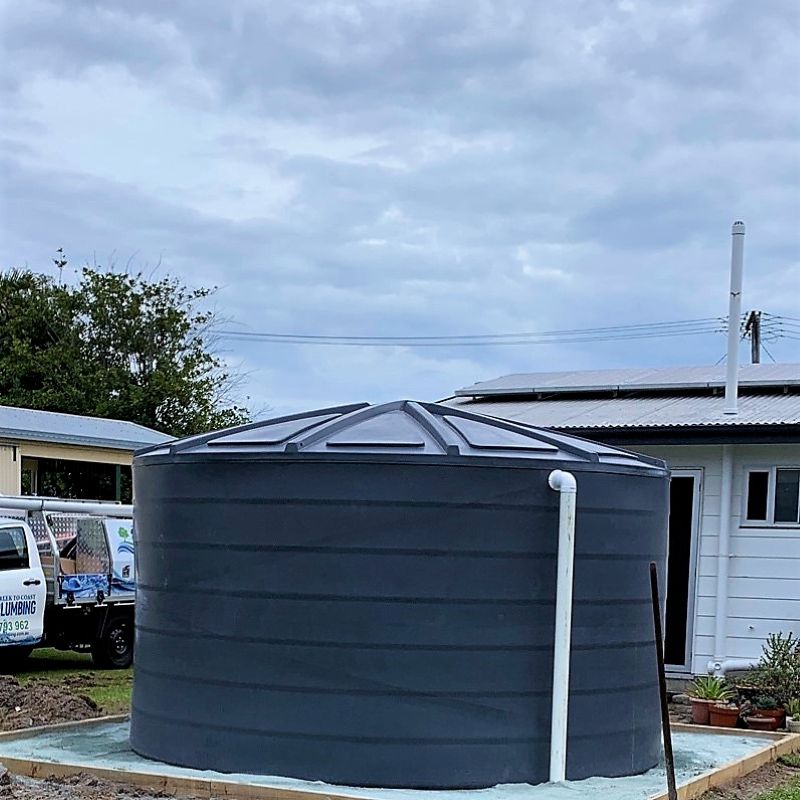Selecting the Perfect Rainwater Harvesting System Tailored to Your Lifestyle and Water Conservation Goals
In Queensland, an increasing number of homeowners are opting for rainwater tanks as a strategy to reduce utility costs, ease the burden on local water supplies, and cultivate drought-resilient properties. Before committing to a rainwater tank installation, it’s vital to determine a key factor: How much water do you genuinely need for your household?
At Creek to Coast Plumbing, we assist homeowners in designing effective rainwater harvesting systems, with selecting the correct tank size being a foundational step in this important process.

Maximise the Efficiency of Your Rainwater Collection System
Evaluating your rainwater collection capacity is the initial step towards effective water management. This capacity largely hinges on two pivotal components: your roof area and the average annual rainfall for your locality. Understanding these aspects is crucial for efficiently planning your rainwater harvesting system.
Here are some specifics to take into account:
- Typically, for each square metre of roof space, you can collect around 1 litre of water for every 1mm of rainfall.
- If your roof measures 200m² and your area receives 1,200mm of rain each year, you could theoretically harvest 240,000 litres annually.
However, it’s crucial to recognise that this scenario is idealised. In practice, various factors such as first flush systems, evaporation, roof slope, gutter design, and overflow can lead to water loss.
We generally advise planning for a collection efficiency of 80–90% to accommodate these considerations.
What Are Your Intended Uses for the Collected Rainwater?
This is where practical considerations become critical. Will you be collecting rainwater exclusively for garden irrigation, or do you plan to utilise it for toilets, laundry, or even your entire household needs?
Here are some essential aspects to ponder:
Determining the Ideal Tank Size for Your Garden Irrigation Requirements
If your primary aim is to irrigate lawns, vegetable patches, or ornamental gardens, a small to medium-sized tank (2,000–5,000 litres) should suffice.
Nevertheless, this largely depends on the dimensions of your garden and the prevailing rainfall patterns in your area.
In zones where brief but intense rain showers are commonplace, larger tanks may be necessary to capture as much rain as possible during these downpours.
Incorporating Rainwater for Laundry and Toilet Use
Households that utilise rainwater for toilets and washing machines often discover that 5,000–10,000 litre tanks provide considerable benefits. These appliances typically account for around 35–40% of indoor water consumption, leading to significant savings over time.
It is crucial to incorporate a pump and suitable plumbing to connect these systems to your home, a service that Creek to Coast expertly handles as part of our installation offerings.

Factors to Consider for Supplied Water Throughout Your Entire Home
If your objective is to achieve complete self-sufficiency or to supply rainwater to every tap in your residence, you will likely require 20,000 litres or more, depending on the size of your household. Larger tanks can also serve as backup water supplies during fire emergencies, prolonged dry spells, or when hosting gatherings.
How Many Residents Occupy Your Home?
A useful guideline indicates providing approximately 150–250 litres per person per day when employing rainwater for general domestic purposes.
- For a couple: a 5,000–10,000 litre tank is typically adequate.
- For families of four or more: consider 10,000–20,000 litres or larger to guarantee an ample supply.
The number of inhabitants in your home will directly affect how quickly your tank is depleted, particularly during dry spells when water conservation is paramount.
Is Your Roof Area Sufficient for Efficient Rainwater Harvesting?
The size of your roof plays an integral role in determining the volume of rainwater you can effectively collect.
A larger roof area enhances your capacity to harvest water.
Additionally, the configuration of your roof is also crucial. If your property features multiple roof sections that can direct runoff to a single tank, we can design an efficient downpipe system to optimise water capture from all accessible surfaces.
For smaller homes or townhouses, slimline or under-deck tanks may represent the most suitable alternative, and Creek to Coast can assist in identifying the perfect solution tailored to your requirements.

Essential Elements: Proper Placement, Guttering, and Overflow Management
Effective rainwater harvesting encompasses far more than just the tank itself.
A well-structured system requires:
- Sturdy, well-maintained gutters to avert blockages
- Leaf guards and first flush diverters to ensure water quality
- Overflow systems that safely redirect excess water away from your home’s foundations
- A stable, level tank pad or stand to support the structure
Creek to Coast Plumbing provides comprehensive rainwater system installations, which include gutter enhancements, pump integrations, stormwater management, and filtration systems to ensure your tank is secure and ready for optimal use from day one.
How Can You Guarantee Cleaner and Safer Rainwater for Your Home?
We strongly recommend the installation of a whole-house rainwater filtration system, especially if you intend to utilise your collected rainwater for more than just garden irrigation.
The Puretec Hybrid Plus systems, professionally installed by our team, can effectively remove sediments, odours, tannins, bacteria, and can also adjust the water’s pH to mitigate copper leaching and pipe corrosion. Discover the multiple advantages of water filtration for your harvested rainwater.
Making Informed and Strategic Decisions for Your Rainwater Tank Selection
Selecting a rainwater tank involves more than simply choosing the largest option available; it’s about aligning your system with your roof size, the rainfall patterns in your locality, and your specific water usage requirements.
At Creek to Coast Plumbing, we have been assisting Queensland homeowners in establishing sustainable rainwater systems for over 30 years. From identifying the optimal tank size and positioning to comprehensive guttering and filtration solutions, we are committed to ensuring that you maximise every drop of precious rainwater.
The Article: Choosing the Right Size Rainwater Tank for Your Queensland Home first appeared on https://writebuff.com
The Article Choosing the Right Size Rainwater Tank for Queensland Homes Was Found On https://limitsofstrategy.com

